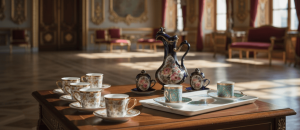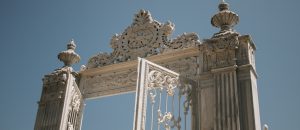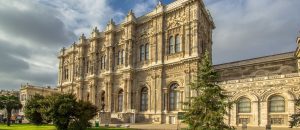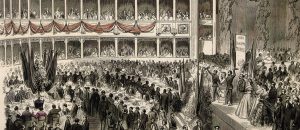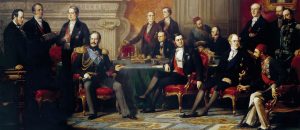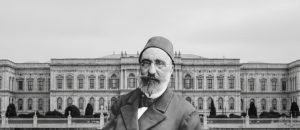The choice of location for Dolmabahçe Palace—its construction on a shore on the European coast of the Bosphorus instead of a sheltered hill in the Historical Peninsula—is not a coincidence. It is a strategic and symbolic decision reflecting the empire’s changing worldview, political orientation, and self-confidence in the 19th century. While Topkapı Palace’s introverted and terrestrial location symbolizes a traditional empire deriving its power from the land; Dolmabahçe’s location, open to the sea and facing the world, is the declaration of a modern empire that has turned its face to the West, values maritime trade, and is unafraid to display itself on the international stage. The palace’s location is, as it were, a mirror of the empire’s new spirit.
Topkapı’s Location: A Sheltered Fortress, An Introverted Power
Topkapı Palace was built by Fatih Sultan Mehmet after the conquest of Istanbul, on one of the city’s most strategic hills, Sarayburnu. The symbolic meaning of this location is very clear:
- Dominance and Control: Surrounded by seas on three sides and strong land walls on the fourth, this hill is a militarily perfect defense point, controlling both the city and the entrance to the Marmara Sea and the Golden Horn.
- Isolation and Mystery: The Palace is separated from the public and the city’s daily life by high walls. This is an introverted architectural approach that reinforces the mystery, inaccessibility, and sanctity of the Sultan and the state.
- Terrestrial Focus: The main entrance and focal point of the Palace are on the land side. Power comes from the land and conquered territories. The sea is primarily a defense line and a scenic element.
Topkapı’s location reflects the spirit of a self-sufficient, land-focused imperial center isolated from the public.
Dolmabahçe’s Location: An Open Showroom, An Outward-Looking Assertion
By the 19th century, the empire’s priorities had changed. The core issue was no longer conquering territory but protecting existing lands, and establishing diplomatic and commercial relations with Europe to take a place among the “Great Powers”. The construction of Dolmabahçe Palace on the Bosphorus coast, on land obtained by filling in an old imperial bay, perfectly reflects this new vision.
- Visibility and Representation: The Palace was built at the most visible point, where [Link: all international ship traffic passing through the Bosphorus -> /sultanlarin-izinde-dolmahce-sarayina-denizden-ve-karadan-ulasim-rehberi] can see it. There is now a power that displays itself, rather than one that hides. The Palace is the empire’s showroom opening to the world.
- Focus on the Sea: The most magnificent façade of the Palace faces the sea. One of the main protocol entrances is the sea gate. This is an indicator that the empire now seeks its power and future not only on land but also on the seas, meaning in international trade and diplomacy.
- Integration with the City: Unlike Topkapı, which was completely cut off from the city by high walls, Dolmabahçe establishes a more integrated relationship with the modernizing urban fabric through structures such as [Link: Akaretler Row Houses and the Clock Tower -> /sarayin-golgesindeki-sehir-saat-kulesi-ve-akaretler-modern-istanbulu-nasil-sekillendirdi].
Dolmabahçe’s location is the manifesto of a modern empire that is self-confident, seeks dialogue with the West, and declares itself part of the international system.
Transition from the Introverted Fortress to the Outward-Facing Showroom
The contrast between the locations of these two palaces is actually the clearest geographical summary of the shift in mindset the empire underwent.
| Feature | Topkapı Palace (Fortress) | Dolmabahçe Palace (Showroom) |
| Geography | Sheltered Hill | Open Shore |
| Focus | Land | Sea |
| Identity | Introverted, Defensive | Outward-Looking, Representational |
| Message | “I am Inaccessible, I am Mysterious” | “I am Visible, I am Modern” |
| Era | Classical Conquest Empire | Modern Diplomacy Empire |
Conclusion
In conclusion, the placement of Dolmabahçe Palace on the Bosphorus coast is a decision as important and meaningful as its architectural style. This location is the geographical embodiment of the Ottoman Empire’s transition from an introverted fortress to a showroom open to the world, representing the desire to evolve from a traditional land empire to a modern maritime empire (thalassocracy). Understanding the palace’s location means understanding the changing imperial spirit and strategic orientation of the 19th century.








